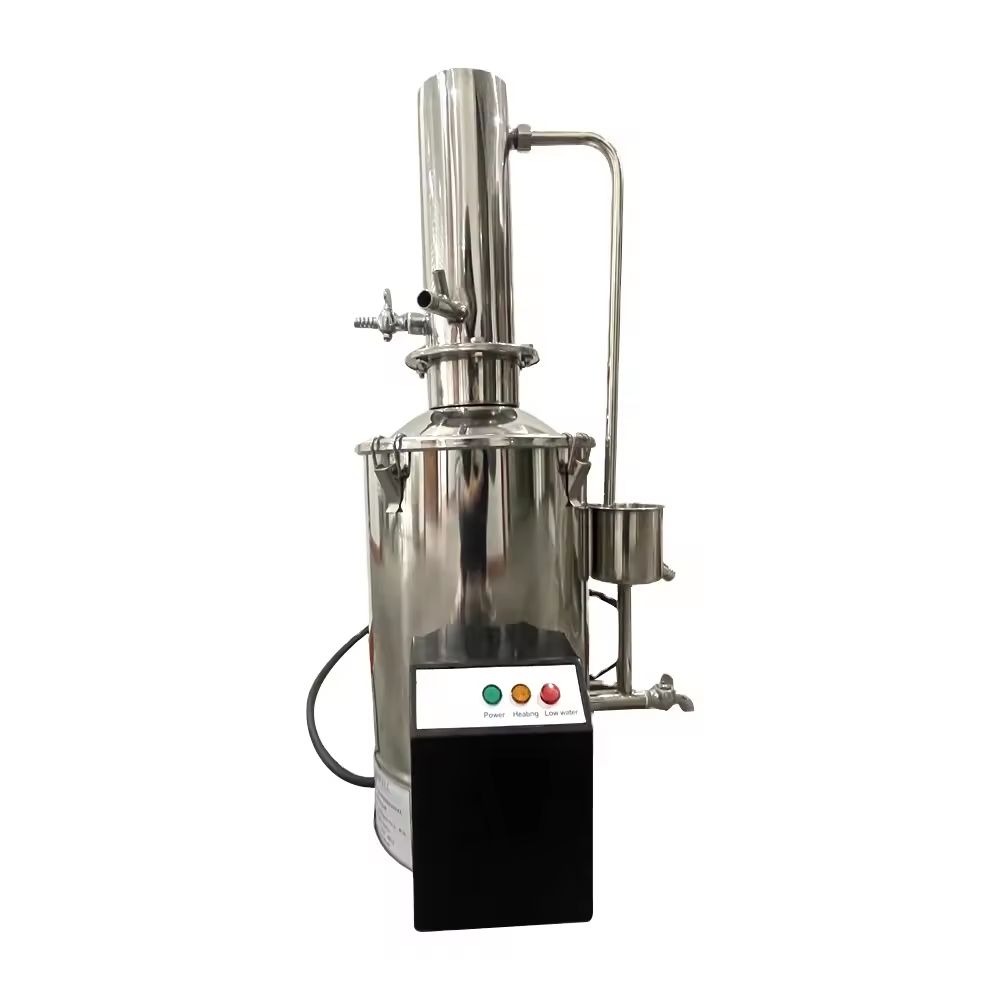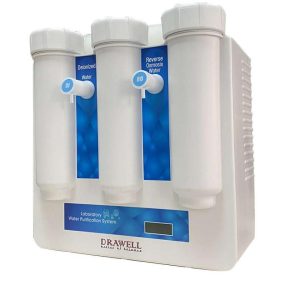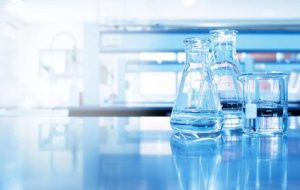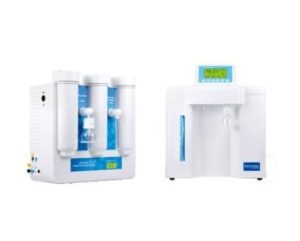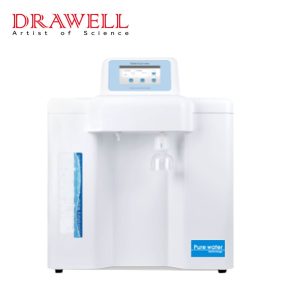When it comes to water purification, two of the most commonly used methods are distillation and reverse osmosis (RO). Both methods are highly effective at removing impurities from water, but they function differently and are better suited for distinct types of water purification needs. This article will delve into the differences between distillation and reverse osmosis, including their benefits, limitations and the ideal situations in which each method excels.
What is the Distillation Process for Water Purification
Distillation is one of the oldest and most effective methods for purifying water. Water distillation is a thermal separation process that relies on heating water to its boiling point and then collecting the condensed steam. This process removes a wide range of impurities, including salts, heavy metals, chemicals, and microorganisms, making it one of the most thorough water purification techniques available.
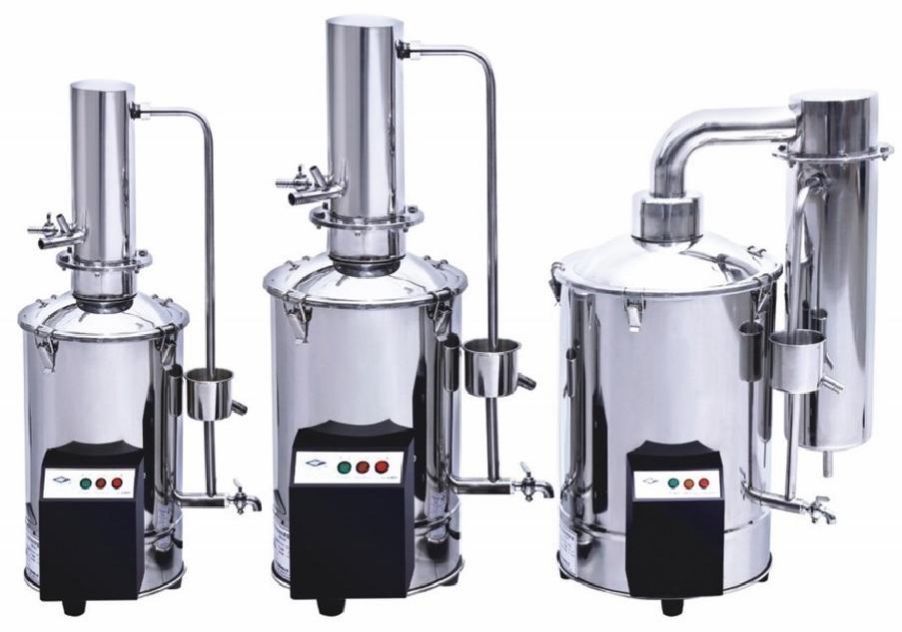
The Basic Distillation Process
- Heating the Water: The process begins by heating water to its boiling point, which is typically around 100°C (212°F) at sea level. As the water reaches this temperature, it evaporates, leaving contaminants such as salts, heavy metals, and other dissolved solids behind.
- Vaporization: The heat causes the water molecules to change from a liquid to a gas (steam). This steam rises because it is less dense than the liquid water.
- Condensation: The steam is then passed through a cooling system, where it is condensed back into liquid form. This purified liquid, now free from the majority of contaminants, is collected as distilled water.
- Separation of Impurities: The key feature of distillation is that most of the dissolved substances and particles in the water (e.g., salts, bacteria, viruses, heavy metals, chemicals) do not vaporize with the water. Therefore, they are left behind in the boiling chamber, while the steam that condenses into water is purified.
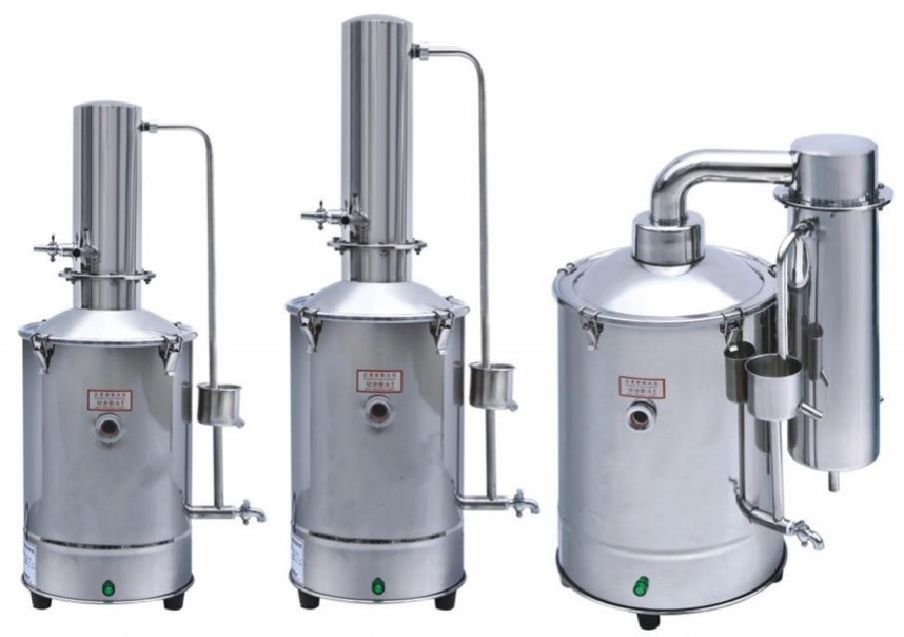
Advantages
- High Purity Water: Distillation removes almost all contaminants, including dissolved salts, heavy metals, bacteria, viruses, and organic compounds. This makes it highly effective for producing water with a very high level of purity. As a result, distilled water is used in medical applications, laboratories, and industrial processes where contamination must be minimized.
- Effective against Microorganisms: The high temperatures involved in distillation effectively kill bacteria, viruses, and other microorganisms, making the water microbiologically safe for consumption.
- Removes a Broad Spectrum of Contaminants: Unlike some other purification methods that target specific types of contaminants, distillation works well against a wide range of impurities. This includes both volatile and non-volatile substances, which may not be effectively removed by other methods like filtration or reverse osmosis.
- No Chemical Additives: Since distillation uses heat rather than chemicals, there are no chemical additives involved in the purification process. This makes it an ideal choice for those who are concerned about chemicals in their drinking water.
- Simple Technology: The distillation process is relatively simple, requiring only basic equipment, such as a heating element, condenser, and collection container. It has been used for centuries and is understood well, making it a reliable method for water purification.
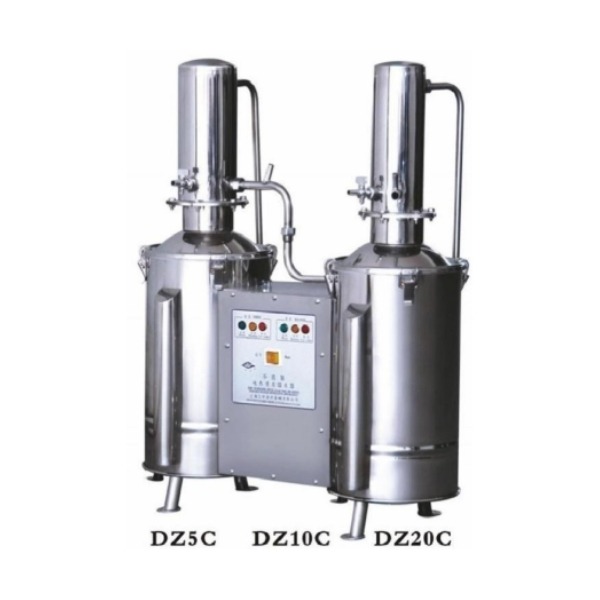
Limitations
- High Energy Consumption: One of the main drawbacks of distillation is that it requires a significant amount of energy to heat the water to its boiling point. This can make the process costly, especially when purifying large volumes of water. It is typically not the most energy-efficient water purification method.
- Slow Process: Distillation is a relatively slow process, as it takes time for the water to heat, vaporize, condense, and collect. The time required to distill water means it may not be suitable for applications that need large volumes of water in a short time.
- Removes Beneficial Minerals: While distillation effectively removes harmful contaminants, it also strips away essential minerals such as calcium, magnesium, and potassium. This can make the water taste flat or bland, and over long periods, drinking distilled water exclusively may not provide beneficial minerals that are typically found in natural water sources.
- Produces Minimal Water: Distillation often results in a low yield of purified water relative to the input volume. Because the process is based on evaporation and condensation, some water is inevitably lost in the form of vapor or as waste. This can make distillation inefficient for large-scale water purification.
- Requires Regular Maintenance: The distillation equipment, especially the boiling chamber and condenser, needs regular maintenance. Over time, mineral buildup (scaling) can occur inside the distillation unit, which can reduce its efficiency and require cleaning.
- Not Effective for Volatile Contaminants: While distillation removes a wide range of contaminants, some volatile organic compounds (VOCs), such as chlorine and certain solvents, may vaporize along with the water and could remain in the distilled product. To address this, additional filtration steps may be needed.
Applications
Distillation is best suited for scenarios that require ultrapure water or where specific contaminants are of concern. Here are a few common applications:
- Laboratories: Distilled water is often required in laboratory settings for experiments where even trace contaminants could interfere with results.
- Medical: Hospitals and medical facilities use distilled water for sterilization, as it is free of pathogens and other contaminants.
- Aquariums: Distilled water is frequently used in aquariums to avoid harmful substances like chlorine, which can harm aquatic life.
- Industrial Processes: Many industries, such as pharmaceuticals and electronics, require distilled water for processes that demand the highest levels of purity.
- Household Use: Distilled water is often used for irons, humidifiers, and CPAP machines where mineral buildup could be problematic.
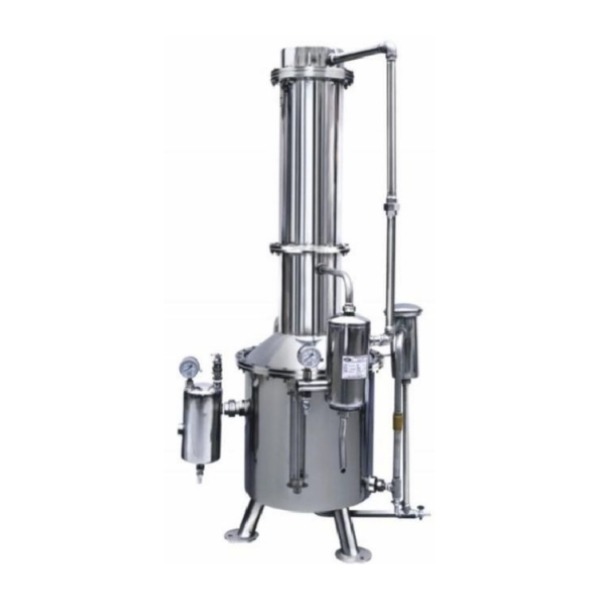
What is the Reverse Osmosis Process for Water Purification
Reverse Osmosis (RO) is a highly effective water purification method that uses a semi-permeable membrane to remove impurities from water. Unlike natural osmosis, where water moves from an area of lower solute concentration to higher concentration, reverse osmosis forces water through the membrane in the opposite direction using pressure. This allows for the removal of dissolved salts, chemicals, bacteria, viruses, and other impurities, resulting in purified water.
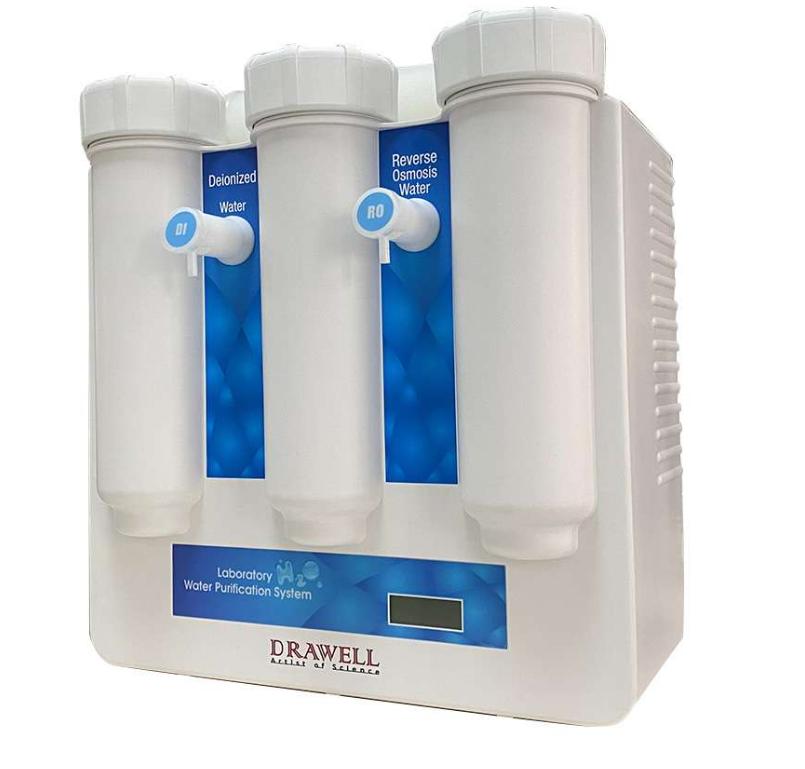
The Reverse Osmosis Process
- Pre-filtration: The water to be purified first passes through pre-filters that remove larger particles, such as sediment, dirt, and chlorine. This step helps protect the reverse osmosis membrane from damage and clogging.
- Semi-permeable Membrane: The filtered water then moves through the semi-permeable RO membrane. The membrane allows water molecules to pass through while rejecting most dissolved solids, including salts, heavy metals, pesticides, and other contaminants. This is the core of the reverse osmosis process.
- Concentrate and Permeate Flow: As water passes through the membrane, it is split into two streams. Permeate is the purified water that has passed through the membrane. Concentrate means that the contaminants that are rejected by the membrane form a concentrated solution that is discharged as waste.
- Post-filtration: After passing through the RO membrane, the purified water may go through additional filters to further improve its taste and remove any remaining trace contaminants. A common post-filter is a carbon filter, which can remove any residual chlorine, odors, or tastes.
- Storage: The purified water is stored in a tank for future use, as reverse osmosis can produce water at a relatively slow rate. When water is needed, it is drawn from the storage tank.
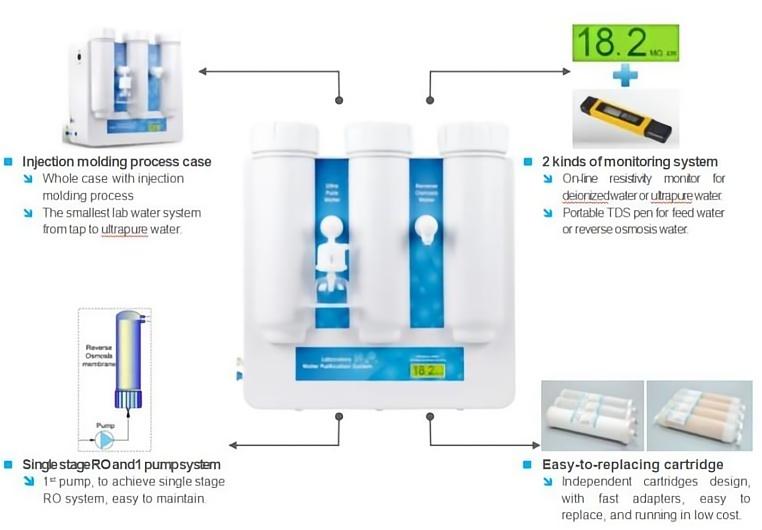
Advantages
- High Effectiveness in Removing Contaminants
- Salts and Minerals: Reverse osmosis is highly effective at removing dissolved salts, including sodium and magnesium, making it particularly useful for desalination of seawater and hard water.
- Chemicals and Contaminants: Reverse osmosis removes pesticides, herbicides, chlorine, fluoride, and volatile organic compounds (VOCs), ensuring that water is free from harmful chemicals.
- Microorganisms: Reverse osmosis can effectively remove bacteria, viruses, and protozoa, ensuring that the purified water is microbiologically safe for consumption.
- Improved Water Taste and Odor
By removing chlorine, chloramines, and other organic chemicals, RO can improve the taste and odor of water, making it more pleasant for drinking and cooking.
- Energy-Efficient
Compared to distillation, reverse osmosis uses significantly less energy because it doesn’t require heating water. The process relies on pressure rather than heat to force water through the membrane, making it more cost-effective for home and commercial use.
- Compact and Easy to Install
Reverse osmosis water purification systems are relatively small and can be installed easily in residential homes, under kitchen sinks, or in commercial settings. This makes RO a practical choice for everyday water purification needs.
- Low Maintenance
While reverse osmosis systems do require some maintenance, such as replacing membranes and filters, the overall upkeep is relatively straightforward and inexpensive compared to distillation units.
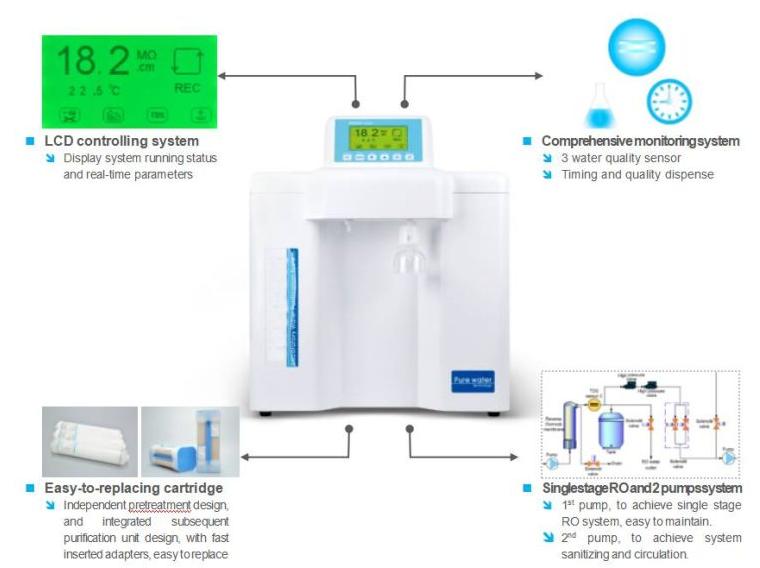
Limitations
- Water Wastage
- Brine Production: One of the main drawbacks of reverse osmosis is the production of wastewater, also known as brine. For every gallon of purified water, several gallons of brine are typically produced, which is discarded. This can be an environmental concern, particularly in regions with limited water resources.
- Water Recovery Rate: The recovery rate of RO systems is typically between 20% and 50%, meaning a significant amount of water is lost during the filtration process.
- Slow Filtration Rate
Reverse osmosis systems produce purified water at a relatively slow rate compared to other methods. It can take several hours to fill a storage tank with clean water, which can be inconvenient in high-demand situations.
- Regular Maintenance Required
- Membrane Replacement: The RO membrane needs to be replaced periodically, typically every 2-3 years, depending on water quality and usage. This can be costly, though it is necessary for maintaining the system’s effectiveness.
- Filter Changes: Pre-filters and post-filters need to be replaced regularly, usually every 6-12 months, to ensure optimal performance.
- Removal of Beneficial Minerals
While reverse osmosis is excellent at removing contaminants, it also strips away beneficial minerals like calcium, magnesium, and potassium. This can result in “flat” tasting water and, if consumed exclusively, may lead to a deficiency in essential minerals over time. However, some systems include mineral filters to reintroduce beneficial minerals to the purified water.
- Not Effective for Some Contaminants
- Reverse osmosis is not effective at removing certain contaminants such as volatile organic compounds (VOCs), some pesticides, and chlorine unless additional filtration steps (like activated carbon) are incorporated.
- Heavy Metals: While RO removes many heavy metals, it may not remove all types, especially if the membrane is not properly maintained.
Applications
Reverse osmosis is versatile and widely used for both residential and industrial water purification. Some common applications include:
- Home Water Purification: Reverse osmosis is commonly used in homes to provide clean drinking water by installing under-sink RO units or whole-house systems.
- Desalination: Reverse osmosis is the primary method used for seawater desalination, turning seawater into freshwater for drinking and irrigation.
- Industrial Use: Industries like food and beverage processing, pharmaceuticals, and electronics use reverse osmosis systems to ensure the purity of water used in manufacturing processes.
- Aquarium Water: Reverse osmosis is frequently used in aquarium water purification to remove unwanted minerals and contaminants that could harm aquatic life.
- Bottled Water Production: Many bottled water companies use reverse osmosis as part of their purification process to ensure clean and safe water for consumers.

Key Differences Between Distillation vs. Reverse Osmosis Method for Water Purification
This chart provides a clear comparison of the distillation and reverse osmosis methods based on key factors like energy consumption, water yield, and the types of contaminants they remove.
| Factor | Distillation | Reverse Osmosis (RO) |
| Principle | Uses heat to convert water into steam and condense it, leaving impurities behind. | Uses pressure to force water through a semi-permeable membrane, leaving impurities behind. |
| Energy Consumption | High energy consumption due to the need to heat water to its boiling point. | Lower energy consumption compared to distillation, as it uses pressure instead of heat. |
| Contaminants Removed | Effectively removes most contaminants, including salts, heavy metals, and microorganisms. | Removes most dissolved salts, chemicals, and microorganisms, but may not remove volatile organic compounds (VOCs). |
| Speed | Slow process due to the time required for heating, evaporation, and condensation. | Generally faster than distillation but still produces purified water at a slower rate than some other methods. |
| Mineral Removal | Removes all minerals, resulting in “flat” tasting water. | Removes beneficial minerals like calcium and magnesium, which can be restored with mineral filters. |
| Effectiveness Against Microorganisms | Kills bacteria, viruses, and other pathogens due to the high temperature. | Removes microorganisms but may require additional disinfection steps if water quality is poor. |
| Waste Production | No significant waste, except for small amounts of residue left in the boiling chamber. | Produces brine (wastewater), which can be significant in large-scale systems. |
| Cost | High operational cost due to energy consumption and slower water production. | Moderate operational cost, with lower energy use but maintenance costs for membranes. |
| Suitability for Large Volumes | Less suitable for large-scale applications due to slow speed and energy inefficiency. | Suitable for larger-scale applications, though brine waste may be an issue. |
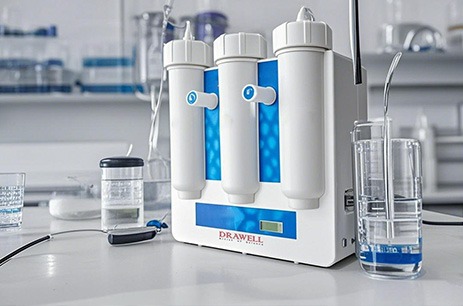
Choosing Between Distillation and Reverse Osmosis Methods for Water Purification
1. Contaminant Types
Distillation is highly effective at removing a wide range of contaminants, including:
- Heavy metals (like lead and mercury)
- Salts (including sodium chloride)
- Organic compounds (such as VOCs)
- Microorganisms (including bacteria, viruses, and protozoa)
Reverse Osmosis excels at removing:
- Dissolved solids (salts, minerals, and chemicals)
- Heavy metals (lead, arsenic, mercury)
- Microorganisms (bacteria, viruses, cysts)
Distillation is the better option if you need to remove VOCs, while reverse osmosis is ideal for most dissolved contaminants but might struggle with certain volatile chemicals.
- Water Yield
- Distillation produces purified water at a slower rate, and the yield is typically lower due to its time-consuming process of evaporation and condensation. It’s more suitable for smaller, specialized needs.
- Reverse Osmosis produces a higher yield of purified water. However, it also generates wastewater (brine), which can be a significant issue in large-scale operations, though advancements in RO technology have helped minimize waste production.
- Maintenance Needs
- Distillation requires minimal maintenance aside from occasional cleaning of the boiling chamber and condensation unit. However, scaling (buildup of minerals) can occur, and descaling is needed regularly if your water is hard.
- Reverse Osmosis systems need more frequent maintenance, especially the membrane and filters, which need to be replaced periodically to ensure the system works efficiently.
- Cost Considerations
- Distillation tends to have higher operating costs due to the significant energy required for heating the water. Initial investment costs can also be higher if you opt for larger or more industrial systems.
- Reverse Osmosis typically has a lower operating cost due to less energy usage but can incur maintenance costs (filter and membrane replacement) over time. Initial investment is usually moderate.
- Environmental Impact
- Distillation has a higher environmental footprint due to its energy consumption, especially if you’re using non-renewable energy sources.
- Reverse osmosis has a smaller carbon footprint in terms of energy usage, but the wastewater produced can contribute to environmental challenges if not properly managed. Large-scale RO systems can require significant infrastructure for brine disposal.
- Scale of Application
- Distillation is best suited for small-scale applications such as laboratory use, medical settings, or residential use when absolute water purity is necessary.
- Reverse Osmosis is more versatile for residential, commercial, and even some industrial applications where consistent and efficient purification is required. It’s commonly used in home water filters, large water treatment plants, and desalination.
If high purity is essential, you’re dealing with volatile chemicals or need complete pathogen removal, distillation may be the better choice, especially for small-scale needs.
If you need efficient, continuous purification for larger volumes with a focus on low operating costs and energy efficiency, reverse osmosis will likely be the best fit. Consider adding a mineral filter if you want to restore some beneficial minerals to your water.
Final Thoughts
Both distillation and reverse osmosis are effective methods for purifying water, but they serve different needs depending on the level of contamination, energy consumption and specific requirements of the user. understanding the key differences between these two methods, you can choose the right water purification system to meet your needs effectively.
Related Products Recommendation
Get Quote Here!
Latest Posts
What Next?
For more information, or to arrange an equipment demonstration, please visit our dedicated Product Homepage or contact one of our Product Managers.

